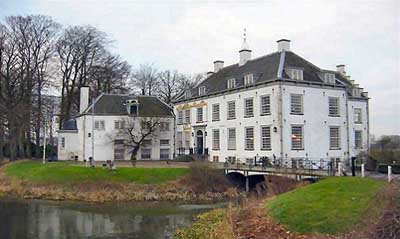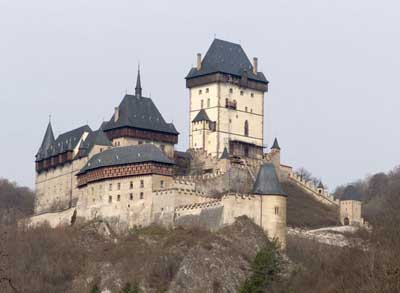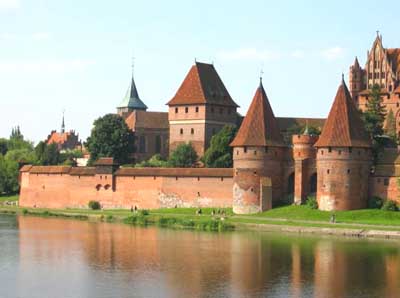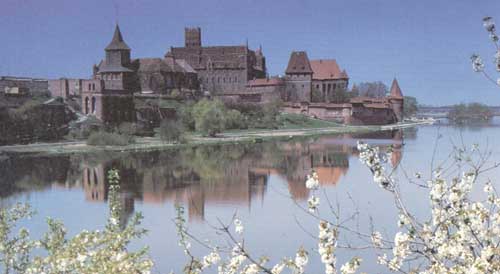  CastlesOn this list you'll find the most important castles in Friland and Hiveria in alphabetic order. Of course these are only the most well-known castles. Friland: Brikan: during the 16th century this castle was inhabited by earl Hrudgaiz Kunradssun, who was stark raving mad and regularly amused himself by throwing buckets filled with crap from the wall on top of the unlucky people who happened to be passing by. Brunag: built in the 17th century as the residence of a nobleman. Brunag does not have high walls or towers and mainly served as a luxurious mansion.  Brunag Hlemburg: this castle was the bulwark of the Stahlridars (Knights of Steel), a Frilandic chivalric order that existed from the 11th century to the 16th century.  Hlemburg Pilsan: this was the castle of duke Segmund Țeudmerssun, who was nicknamed Segmund ța Rauda (Segmund the Red) because of his red hair. He ordered it to be built so he could defend himself against his rival Hans Akwessun. When the castle was finally finished Hans suddenly made peace with Segmund, so the immensely expensive castle was built for nothing. The story goes that Hans already wanted to make peace before the castle was built, but had deliberately waited with that to annoy Segmer. Starwand: from the outside this grey colossus does not look very welcoming, but once inside visitors are deeply impressed by the luxurious interior. Many companies hire the castle to use it as a conference room or guest residence. Sternung: built on a rock, the only entry road is a small path that leads upwards around the rock. Stig: the high walls of this castle made it almost inpenetrable for every enemy. Hordes of tough men tried to take Stig with sabre rattling and thundering cannons without much result, until one day a young farmer girl used a rope to climb the high wall and open the gate for her brother, who still had a bone to pick with the lord of the castle. Since then the expression "ța Stig biklemban" (climbing the Stig) is used for situations in which a difficult problem is solved in a simple way.  Stig Waldanburg: lies in the city with the same name. The castle is owned by the Chinese businessman Shi Fu Ren, who likes to go on holiday to Friland and then stays in the Waldanburg with his family. Hiveria: Château l'Est (Austanburg): when Aust-Walamark still belonged to Friland a stronghold was built near a ford in the Ruisseau (Rițar) as a protection against the Hiverian conquerors. This proved to be no luxury because in the 12th century the Austanburg played a key role in the war between Friland and Hiveria, in which it first fell in Hiverian hands and was then taken back again. By possessing the Austanburg Friland managed to hold off the Hiverians at the Rițar and prevented that Walamark would fall in their hands. Because of its strategic significance the Austanburg grew into one of the most spectacular strongholds of Friland. Ironically seen the Austanburg eventually fell in Hiverian hands without struggle; a bribed Frilandic farmer poisoned the defenders and opened the gate. These days the fully intact castle can still be visited; in 1994 it was briefly in the news when local students barricaded themselves in one of the towers and replaced the Hiverian flag on it with a Frilandic one. Château l'Est is located in the city with the same name.  Château l'Est (Austanburg) Fort de Guy: lies in the city with the same name. This stronghold was built by Guy le Breton, the founder of Hiveria, not far from the place where he landed with his army. Maisonfier: founded by the Hiverian knight Gilbert de Touraine, who, according folklore, was a real womaniser and had sixteen wives. Neufchâteau: founded as "Neuburg" by Frilandic knights, but it quickly fell in the hands of the Hiverian earl Noël d'Anjou. Noël had a lake dug around the castle because he liked fishing so much. He was therefore regularly seen on the wall with a fishing rod. Quicleau (Kwiklau): this castle has been in the possession of a noble family for centuries. In the 19th century, when they were forced to flee the castle for the Hiverians, they decided to burn it down. Since then only half of the castle is still fit for habitation.  Quicleau (Kwiklau)  |